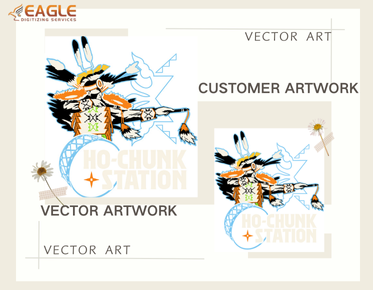The fundamental difference between vector and raster images – Explained once and for all!
Introduction to Image Formats
In the world of digital art and design, understanding the different types of image formats is essential. Two primary types are prevalent: vector and raster images. Each has its own unique characteristics and advantages that can significantly affect the outcome of a project depending on the specific needs and applications.
What are Vector Images?
Vector images are constructed using mathematical formulas rather than pixels. These formulas define shapes such as lines, circles, and polygons, which make up the image. The most significant advantage of vector images is their scalability. No matter how much you resize or zoom into a vector image, it maintains its clarity and sharpness. This quality makes vector images ideal for logos, vector graphics converter, and other designs requiring size adjustments without losing quality.
Characteristics of Raster Images
Raster images, in contrast, are composed of pixels arranged in a grid. Each pixel has its own specific color value, and collectively, they form the complete image. Common examples include photographs and web graphics. While raster images can beautifully render complex, detailed images like photographs, they become pixelated when scaled beyond their original resolution, causing a loss in quality. To mitigate this, higher resolution raster images are recommended for print purposes, but they often come with the trade-off of larger file sizes.
Applications of Vector Images
Vectors excel in applications where precision and scalability are crucial. They are widely used in branding and logo design due to their adaptability across various products and advertising materials without loss of resolution. Industries like screen printing, digital embroidery, and large format printing benefit significantly from using vector graphics. These industries often require the ability to convert vector files to embroidery or other specialized formats to fit diverse needs.
Applications of Raster Images
Raster images are the go-to choice for detailed photography, intricate artwork, and any application where fine details and color depth are required. This includes digital paintings, complex photo manipulations, and web optimizations. Tools like Photoshop are primarily raster-based, allowing artists to create stunningly detailed pieces but typically not suitable when scale adjustments are needed without compromising quality.
The Role of Digitizing Services
Understanding when to use vector vs raster images is pivotal in selecting the right type of image for your needs. Eagle Digitizing offers comprehensive services that help bridge the gap between these two types. Besides offering vector conversion services and raster to vector conversion, Eagle Digitizing provides vector tracing and logo vectorization, which are crucial for businesses aiming to leverage both raster and vector graphics effectively【4:2†Vector Services.json】.
Technological Advances and Industry Trends
As technology continues to advance, the boundary between raster and vector graphics blurs. Software increasingly supports both formats, allowing for greater flexibility and creativity in design. Fast vectorization services are now more accessible, enabling designers to quickly convert raster images to vectors for better scalability. Companies like Eagle Digitizing are at the forefront, continuously upgrading their technologies and services to accommodate the growing demand for high-quality, scalable graphics.
Getting the Best of Both Worlds
The choice between vector and raster images boils down to the specific requirements of your project. It is crucial to evaluate the end use of an image; for instance, whether it requires resizing without quality loss or if it needs to deliver rich, photorealistic detail. With the availability of professional graphic conversion services, businesses and designers can harness the strengths of both formats, ensuring visuals are optimized for their particular needs without compromise.
Future Prospectives in Image Formats
With the role of AI and machine learning growing in the graphic design industry, the line between vector and raster might evolve even further. Innovations in software could further streamline processes, making it easier to integrate and transform images between these two formats. As a designer or business owner, staying updated with these technological shifts is crucial to maintaining a competitive edge in an ever-evolving digital landscape.



.png)